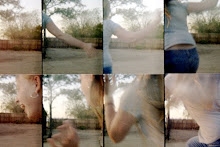Know anything about Dr. Theodore John Kaczynski?
Yeah, I didn't either.
Better known as the Unabomber, Ted Kaczynski, famous for his campaign of mail bombings, is also a mathematician and social critic, albeit being incarcerated. He was born in Chicago, an intellectual child prodigy, and became an assistant professor at UC Berkeley by the age of 25 but resigned two years later. In the summer of 1971, he moved to a small residence of his parents' in Lombard, Illinois, and two years later moved to just outside Lincoln, Montana in a remote cabin he built himself. He did so in order to live a simple life without money, electricity or running water. His goal was to become self-sufficient and it was here that he became driven to start his bombings. On a walk to one of his favourite remote spots he found the development of a road and was outraged. In his "Unabomber Manifesto" written as Industrial Society and Its Future, he detailed, among other things, "getting back at the system" rather than his original goal of survival skills and primitive technologies. He proceeded to send 16 mail bombs to university professors and airline officials between 1978-1995, injuring 23 people and killing 3. He often included letters, some to his former victims, demanding his manifesto be printed in a newspaper or journal, or his terrorist actions would continue. The US Department of Justice ended up publishing it in the New York Times as well as the Washington Post in favour of public safety, and also with the hope someone would recognize the author's writing style. Before its publication, Ted's brother David was already suspicious of him being behind the bombings, and in the end it was him who turned him into the FBI, who in April 1996 arrested Ted Kacyznski at his cabin in Montana. He is currently living a life sentence in prison without the possibility of parole in Florence, Colorado. His manifesto can be read here, and though his actions were extreme I'm definitely curious about the thoughts behind such a person.

